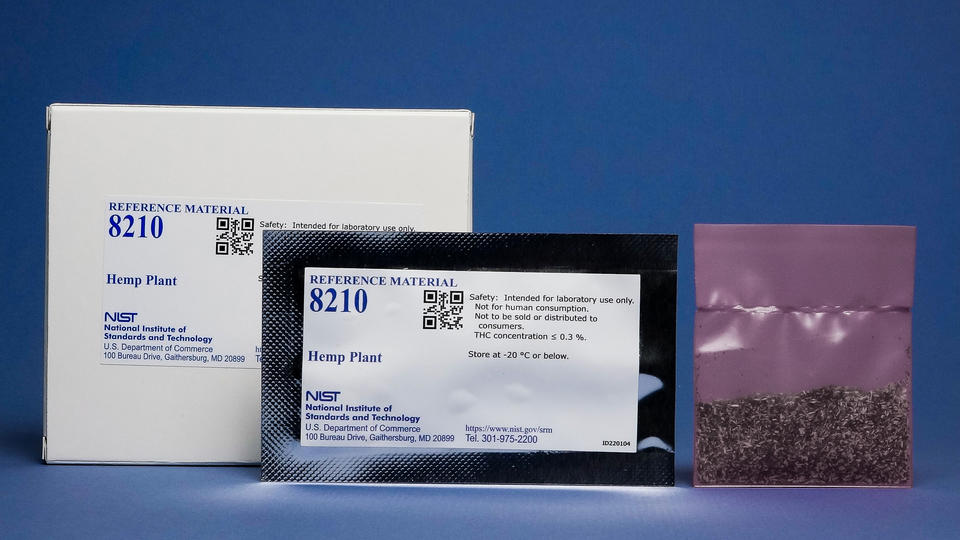An RM for Measuring Cannabinoids and Toxic Elements in Hemp
Reference Material 8210 Hemp Plant

The Hemp Plant reference material (RM 8210) provides values for cannabinoids and toxic elements in a dried ground hemp plant material to help cannabis and forensic laboratories for use as a control and research material. The need to accurately measure cannabinoids and moisture in hemp gained greater importance following the passage of the 2018 Farm Bill. Toxic elements have been identified as high priority measurands due to the public health concerns associated with exposure.
Hemp has been removed from the DEA Schedule 1 controlled substance list and defined as Cannabis sativa with a Δ9‑tetrahydrocannabinol (Δ9‑THC) concentration of less than or equal to 0.3 % on a dry‑weight basis. In 2021, the United States Department of Agriculture published a final rule providing regulation on hemp production in the US clarifying these measurements must be based on total Δ9‑THC (including its acidic precursor Δ9-tetrahydrocannabinolic acid [THCA]). The National Institute of Standards and Technology (NIST) has developed a Cannabis Research Program that includes development of analytical methods, the Cannabis Laboratory Quality Assurance Program (CannaQAP), and the development of the reference material RM 8210 Hemp Plant to aid in research and regulation.
RM 8210 is dried hemp plant, Cannabis sativa L., containing materials obtained from two sources. The level of cannabinoids and toxic elements in the RM was targeted to represent typical levels found in hemp plant from conventional agriculture practices. NIST prepared the RM by grinding the hemp plant materials, sieving the resulting materials to ensure a particle size between 250 μm and 710 μm, packaging, and storing at –80 ºC. Mass fractions were assigned for toxic elements using ICP-OES, ICP-MS, and direct mercury analyzer methods. Cannabinoid mass fractions were assigned using NIST’s published liquid chromatographic with a photodiode array detector (LC-PDA) method.
A unit of RM 8210 contains three sample packets (approximately 1.5 g each), each sealed with a desiccant pouch in an aluminized polyester bag.
Learn More:
Bryan Sallee CE, Wilson WB, Barber CA, Johnson ME, Klingsick JR, Mulloor J, Toman B, Wood ESC, Wood LJ, Yarberry AJ (2024) Characterization of Reference Material 8210 Hemp Plant. (National Institute of Standards and Technology, Gaithersburg, MD), NIST Special Publication (SP) NIST SP 260‑248. https://doi.org/10.6028/NIST.SP.260‑248

